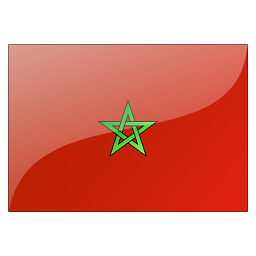



It is the coastal wind – the beautifully named alizee, or taros in Berber – that has allowed Essaouira (essa-weera, or es-sweera in Arabic) to retain its traditional culture and character. For most of the year, the wind blows so hard here that relaxing on the beach is impossible, meaning that the town is bypassed by the hordes of beach tourists who descend on other Atlantic Coast destinations in summer. Known as the ‘Wind City of Africa’, it attracts plenty of windsurfers between April and November, but the majority of visitors come here in spring and autumn to wander through the spice-scented lanes and palm-lined avenues of the fortified medina, browse the many art galleries and boutiques, relax in some of the country's best hotels and watch fishing nets being mended and traditional boats being constructed in the hugely atmospheric port.

By the time caravans laden with gold and spice reached Skoura, the camels must’ve been gasping. After a two-month journey across the Sahara, blue-robed Tuareg desert traders offloaded cargo from caravans in Skoura, where Middle Atlas mountaineers packed it onto mules headed to Fez. Ouarzazate, 39km west, is now the region’s commercial center, but Skoura’s historic mudbrick castles remain, and traders throng Monday and Thursday souqs brimming with intensely flavorful desert produce. When market days are done and palm-tree shadows stretch across the road, no one seems in a hurry to leave.

Like the other towns on this stretch of the Atlantic, Larache is laid-back for most of the year but bursts into life in summer, when Moroccan tourists flock to nearby Ras R'mel beach. Occupied by the Spanish for most of the 17th century, the town developed a local industry building ships for the corsairs operating further south. It eventually became the main port of the Spanish protectorate in 1911. Though certainly as picturesque as its northern neighbor, Asilah, Larache gets far fewer visitors and is relatively hassle-free. Come here for local flavor rather than headline sights, and don't expect a lot in terms of accommodation and eating options.

An industrial center and thriving port, Safi is a lot less picturesque than neighboring coastal towns but does offer an insight into the day-to-day life of a Moroccan city. Most tourists stop here en route to or from Essaouira to visit the giant pottery works that produce the typical brightly colored Safi pottery.

This windswept coast is home to Morocco's cultured capital, Rabat, and its economic hub, Casablanca. The refined Moorish architecture and liberal attitudes on display in both cities are a far cry from the medieval medinas and conservative lifestyles of inland cities such as Fez and Marrakesh.

The small Berber town of Sefrou is a picturesque place situated on the edge of the Middle Atlas. Its annual Cherry Festival was inscribed in the Representative List of Intangible Heritage of Humanity in 2012. As such, its medina walls have been restored, and some fanadiq (ancient inns used by caravans) are being rebuilt. Sefrou once hosted one of Morocco’s largest Jewish communities (as many as 8000 people, according to some accounts), and it was here that Moulay Idriss II lived while overseeing the building of Fez.

Taroudant (also spelled Taroudannt) is sometimes called "Little Marrakesh," but that description doesn’t do the Souss Valley trading center justice. Hidden by magnificent red-mud walls, and with the snowcapped peaks of the High Atlas beckoning beyond, Taroudant’s souqs and squares have a healthy sprinkling of Maghrebi mystique. Yet it is also a practical place, a market town where Berbers trade the produce of the rich and fertile Oued Souss plain.

A little village that’s seen a whole lot of tourist action in the past decade, Setti Fatma is a scenic stop for lunch by the river and for hikes to seven waterfalls. The village is neatly nestled in a canyon beneath the High Atlas mountains at the southern end of the Ourika Valley road, 24km south of the Oukaimeden turn-off at Aghbalou.

Rather than retracing the N10 back to Marrakesh via Tinerhir and Ouarzazate, adventurous desert travellers opt for the N12, which traces the southern foothills of Jebel Saghro via Alnif, Tazzarine and Nkob. The road sees little traffic and few tourists and provides an interesting link through prime fossil-hunting territory to the Draa Valley, where it emerges at Tansikht 63km north of Zagora and 98km south of Ouarzazate. Kasbah-studded Nkob is the most atmospheric place to stay and provides a good base for Jebel Saghro treks and exploration.